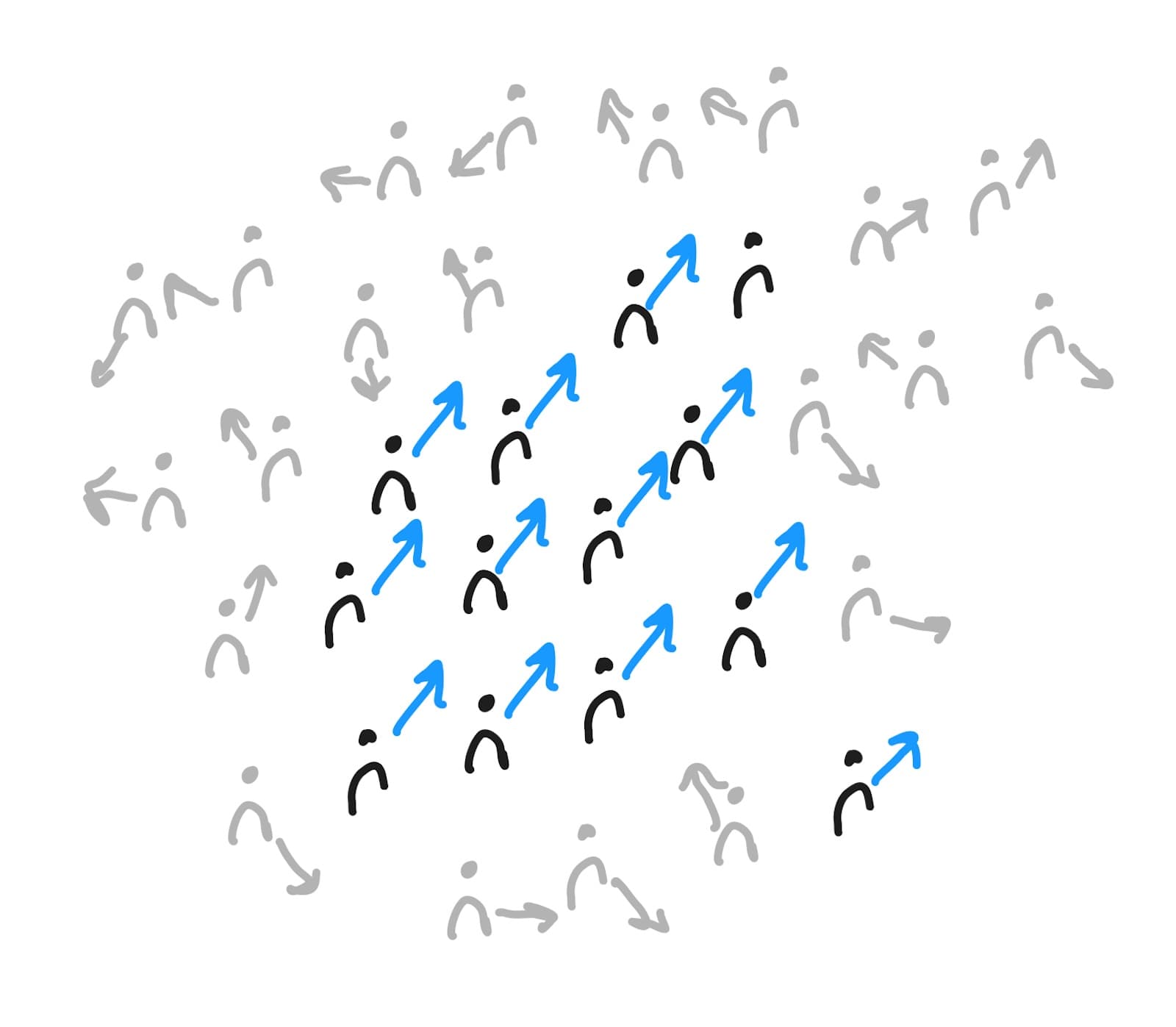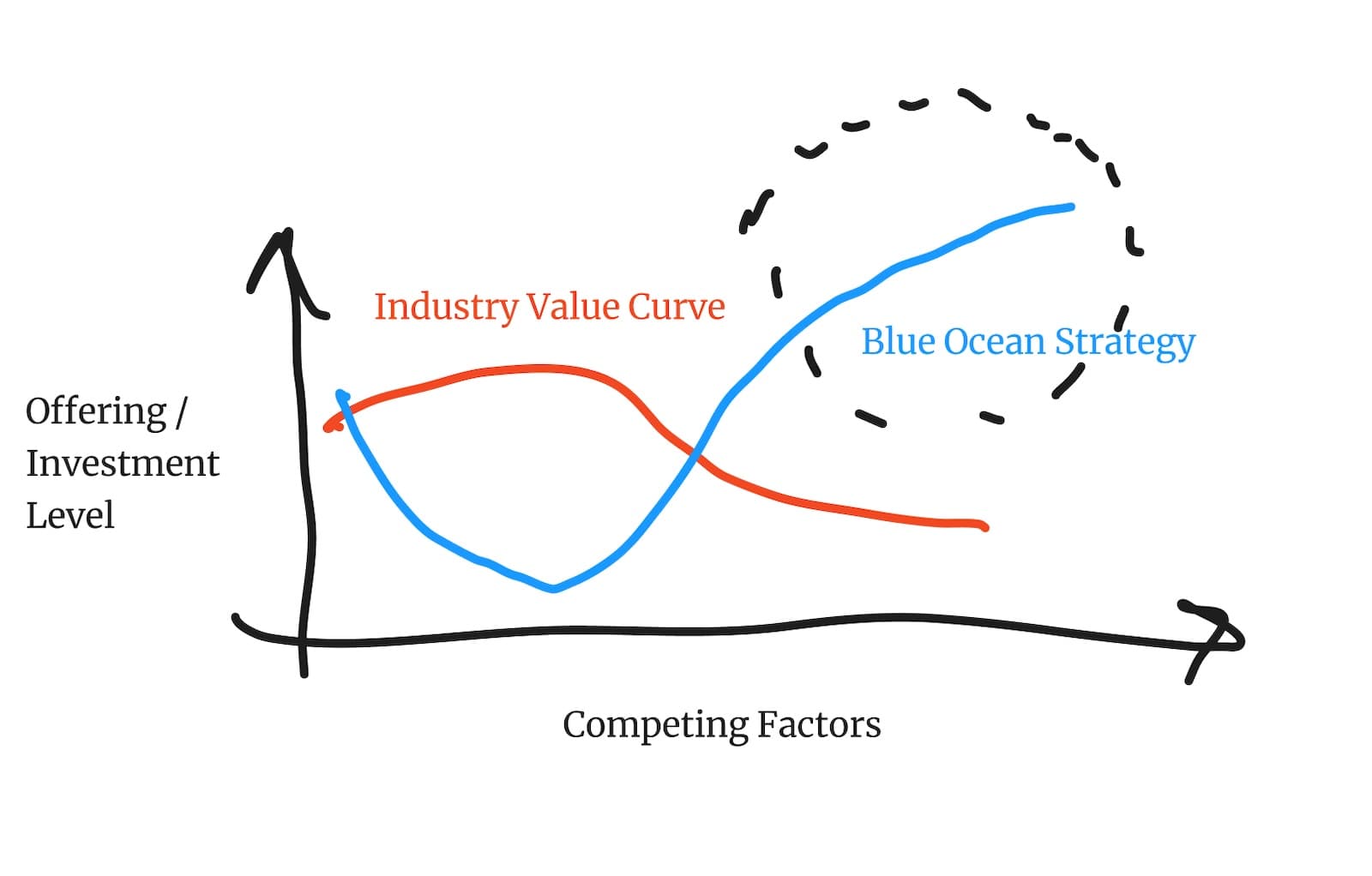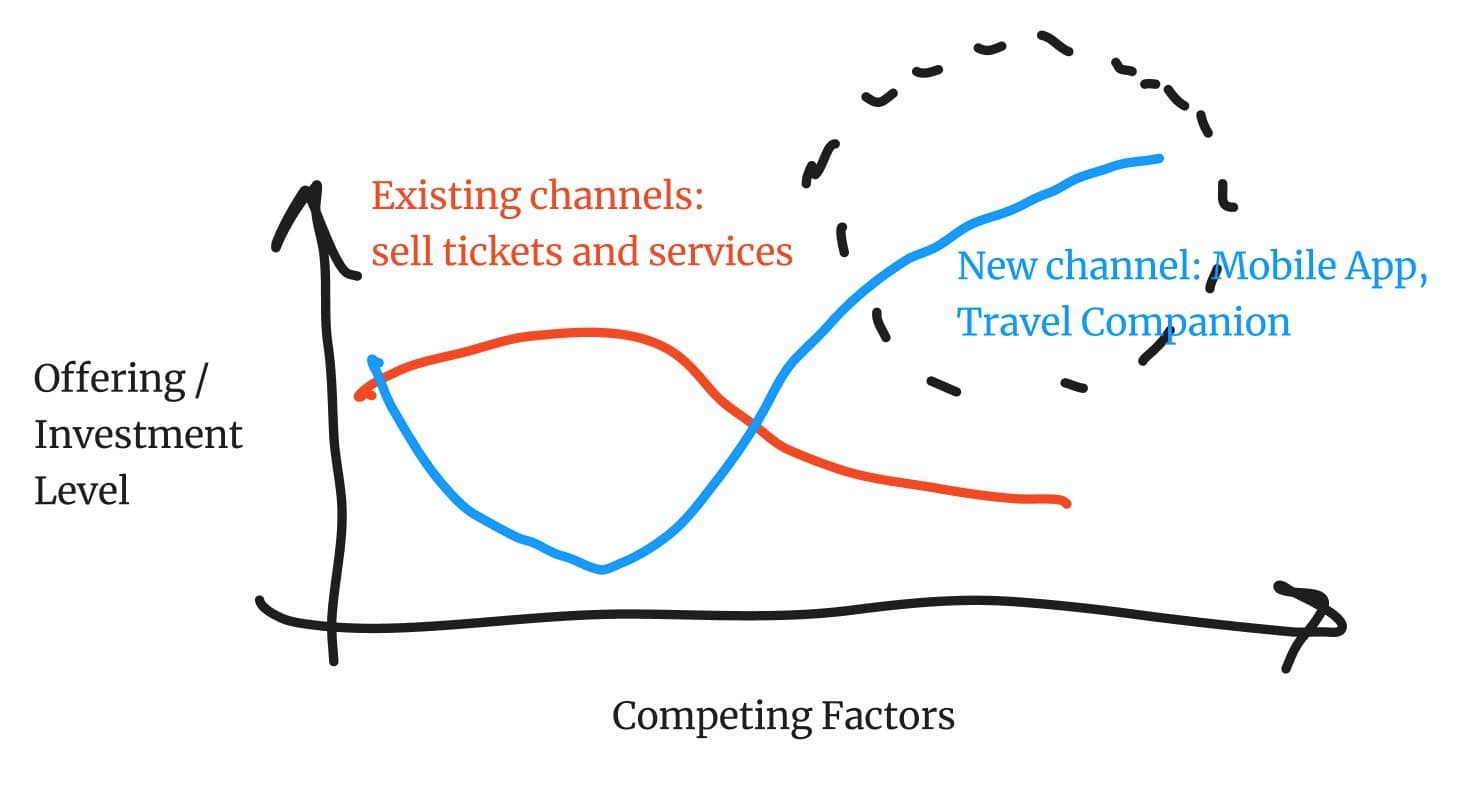Why - The Purpose of the Product
Finding the Key Value Proposition
From User Needs to Market Understanding
Ultimately, every single product can be reduced to a specific user need, and hence to an individual user. But to increase the chances of making product that can succeed and gain growth, you need to find out if there is a critical amount of users that have that specific need, which can be better met with your product, and isn't served well enough with anything else out there. Chances here though are against you - there is already very likely a product or a solution the user is equipped with to tackle their problems and to fulfil their needs. Don't underestimate the cost of switching a product - your product's unique value must outweigh the cost of switching from an existing solution.
The space where you are working in, could be anything from enhancing the mobile experience for brick and mortar stores selling to online marketplaces, building a platform for short form content creators or building tools to organize the work for reachtstack drivers in a container ship terminal. Whatever the context is, your intended product will be competing with existing ways of working, established habits and products already available at the market - be it your own or your competitors - from which the users need to switch to using and paying for your product or service.

Assess critically if there is a large enough audience for your product, which is currently underserved in the market? Can the new product offer them something that isn't offered by anything else out there? Is the product compelling enough to get large enough audience rallying behind my product? Finding the unique value proposition for your product that fits the current market is essential.
Finding the Unique Value Proposition
What are the elements of the product you're building that are directly competing against the existing market? What are the users' existing expectations from a product in the market? What is the job that users are trying to get done with the products they use? What are the elements of my product that provide unique value other products currently can't? Frameworks, like the Blue Ocean strategy framework, or the customers needs and jobs-to-be-done -focused thinking of Clayton Christensen on Innovators Solution, can help you frame your product idea and solution against that existing world, where your users are interacting with existing solutions provided by incumbent companies in the market, to find the customers' unmet needs and the potential to create new innovations.

Different product strategy frameworks help you identify where the current industry competition and investments are the highest - where you should do the minimal investments to offer a minimal level of service, and instead put most of your investments into the areas of your product where you create value beyond what is currently available in the market. If you can't find that competitive edge from your product, chances are users will not choose your product over the product or solution they already use.
As a result of work done for market understanding and user needs and the key value proposition, the product's purpose could be stated for example as Travel Companion for Airline Travelers for a mobile app for an airline or Delivering Tomorrow's Digital Service Visions Today for an agency building digital services for airlines orThe number one online destination for fashion for an online fashion marketplace. Based on the maturity of the product or the service, this typically doesn't change much over time. When creating a completely new direction and purpose for the product, it is often considered a pivot. This could be a result of not finding enough growth with the existing product, a significant shift in the market or a new competitor entering the market and changing the game.
Blue Ocean Strategy for Building a Mobile App Supporting Digital Services for an Airline
Most airlines have at least one primary use case for their businesses; fly planes between destinations and sell tickets to fill the planes with people and then sell extra services to those with no or very low operational costs. Hence, building a digital service for an airline is very likely going to enable those use cases: users can buy tickets and users can buy extra services - which indeed are mostly present in airline websites and apps.
When tasked to build a mobile app to an airline, we wanted to look beyond those primary business use cases, and see what are the users jobs-to-be-done in the context of that airline, and what are the specific jobs that a mobile app could support the users with? At the time, the airline was already running a successful business of selling tickets and extra services, so clearly those weren't needed per se, as users already had a solution for those primary cases. But what users didn't have, was the right information at the right time, before and during their journey. The information was scattered in onboarding emails, informational websites and just-in-time text messages. During the hectic and sometimes stressful times of catching a flight, finding the relevant information at the right time was hard.

From understanding the airlines existing channels and services provided joined with the business's and users needs, a guiding principle for the app became Travel Companion - Provide the right information and right services at the right time. Mobile app was the perfect vehicle for bringing contextual information and services to the users where they were, when they were. It is always available for the user and allows pushing time-critical information to the user in real-time, when user actions are required, like "now is a good time to head off to the airport". It also supported the airlines main use cases, buying tickets, but at minimal investment. It also included selling extra services - but at the right time when the user more likely had the need for that given extra. The main investments in the app were made to an under-served user need, making it a true travel companion that was adopted by the users as 80% of app users used it throughout their entire journey.
Using Playing-to-Win Framework for Finding a Product-Market-Fit
While working in a consulting agency, we had built world class and Red Dot award winning in-flight entertainment systems and mobile application to one national airline. Through that work we had learned what players there are in the industry, what they offer and how they work, and we saw an opportunity both how to drastically improve the user experience and business opportunities especially within the in-flight entertainment systems as well improve the way software building loops can be made significantly faster in the industry. We wanted to scale for more clients internationally.
We started looking at our consulting offering for airlines through the 'Playing-to-Win' strategy framework, where we focused at looking both what was the unique value proposition we were able to offer and what were the characteristics of a potential airline client for our offering. We had learned that timing was essential, as building new in-flight entertainment systems was dependent on the airplane fleet updates but additionally it was dependent on the ambition level for an airline to invest into digital user experiences. The industry also had it set ways of buying software, and it was not an easy task to approach new clients as a local boutique consulting agency.
As a result we did two major changes. We shifted from targeting all major airlines to targeting selected clients with higher potential for investing into digital user experiences while upgrading or updating their fleet with technology familiar to our expertise. We went from a generic offering, as usual for a consulting agency but less familiar model to airlines buying software, to offering a more specific and tailored product, geared more towards the industry standard of purchasing software as products. We set a few clients as North Star clients to pursue as a measure of success, and also started spreading a clear message of our specific offering through trade shows and industry conferences. We customized our product offering to fit our target clients, based on their upcoming fleet upgrades. Within a year from our focus shift we had started a project with one of our North Star clients as well as had project negotiations ongoing with two large clients to be started on schedule with their upcoming fleet renewals.
Key Takeaways
Your product does not operate in a vacuum. Understand where the market is and what needs users have - which are already solved by one way or the other, and what expectations users may have. Find out who really are your target customers, what is the minimum you need to invest to match the existing solutions on the market and put most of your bets in the competing factors other solutions don't offer for your intended customer segment.
Inspiration and Further Reading:
- The Innovator's Solution: Creating and Sustaining Successful Growth by Clayton Christensen
- Blue Ocean Strategy: How to Create Uncontested Market Space and Make Competition Irrelevant by W. Chan Kim, Renee Mauborgne
- The North Star Playbook: The guide to discovering your product's North Star by Amplitude
- Playing to Win: How Strategy Really Works by A.G. Lafley, Roger L. Martin